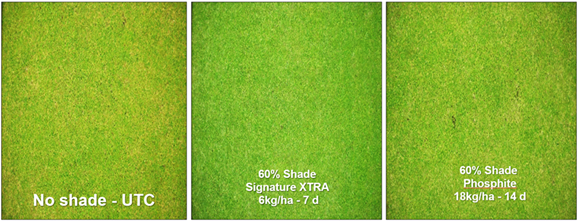Managing Turf In Periods Of Low Sunlight And Shade
With regular and consecutive days of very low sunlight levels due to overcast weather, combine with rapidly shortening day length, this can place increased abiotic stress on turf plants. Low light levels can reduce the photosynthetic rate and the build-up of carbohydrate reserves in turf. In low light, couch grass becomes thin, off-colour, weak looking and mower scalp injury is common (algae can then establish.) Cool-season turf with low energy reserves due to low light conditions may compromise speed of recovery from autumn renovations.
How can Stressgard® help mitigate stress from shade and low light conditions?
The science:
1. Photosynthesis is the driver of all plant energy production and subsequent processes.
2.The protection and maintenance of chlorophyll with Stressgard® ultimately improves the turf’s ability to photosynthesise, which is beneficial to all turfgrass under any stress condition.
The research:
1. A study by Huang and Liu, published in 2009 in the International Turfgrass Society Research Journal showed that Signature Stressgard alone in the absence of disease, can improve photosynthesis under low light conditions.
2. Research by Danneberger et. al in 2017 from Ohio State University demonstrated the positive impact of Signature on creeping Bentgrass in shade, being thicker, more rigid cell walls, complete cells and higher internal turgor pressure leading to upright, non- elongated growth.
Stressgard Benefits – Quality and vigour under shade stress
 |
